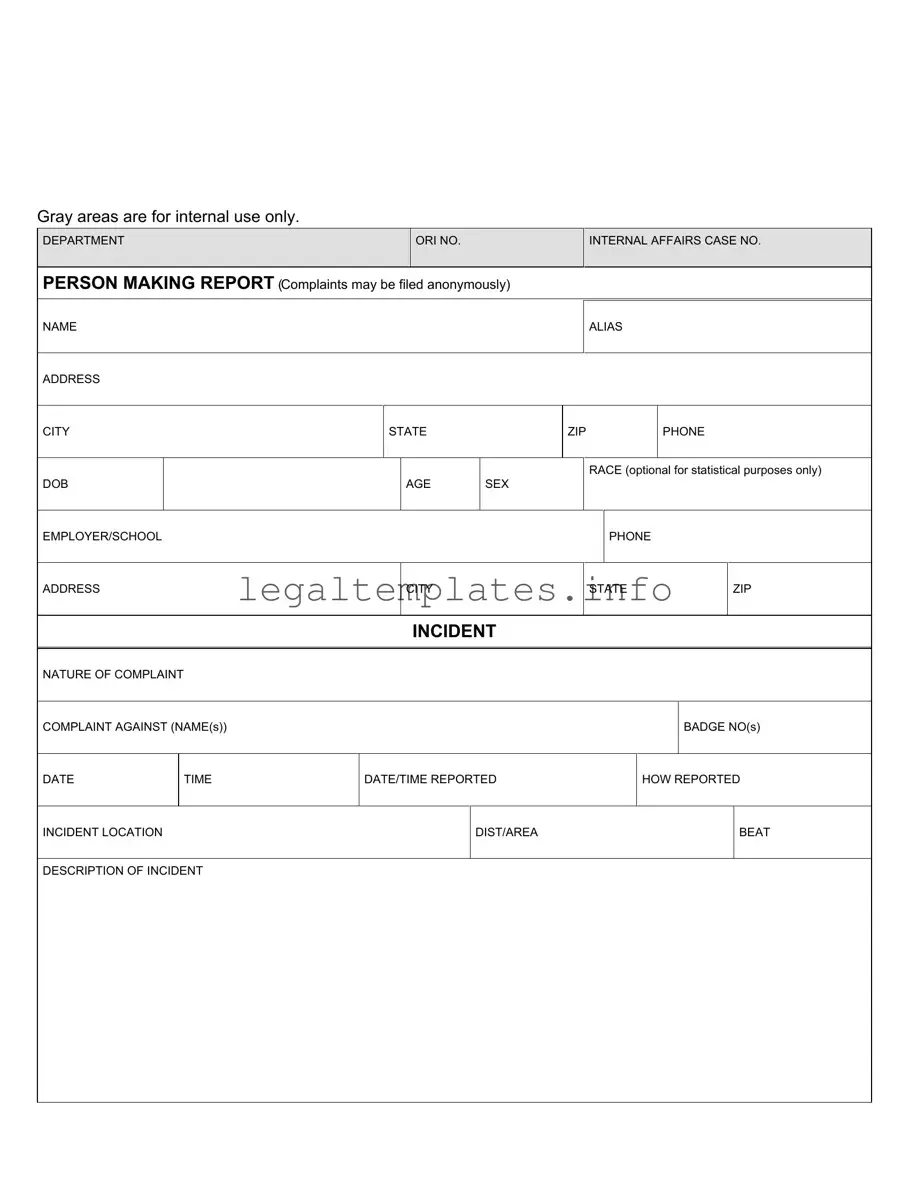What is the purpose of the Internal Affairs Complaint/Report Form?
The Internal Affairs Complaint/Report Form is designed for individuals to report any complaints they have regarding the conduct of law enforcement officers within Morris County, including those from the Morris County Prosecutor’s Office. The form serves as a formal way to initiate an investigation into alleged misconduct or improper behavior conducted by law enforcement personnel.
Can I submit a report anonymously?
Yes, complaints can be filed anonymously. The section for the person making the report includes the option to provide your name, but it is not mandatory. However, providing your contact information can be helpful if further information or follow-up is necessary for a thorough investigation.
What information do I need to provide about the incident?
It's important to provide a detailed account of the incident, including the nature of the complaint, description of the incident, and any injuries sustained. Information such as the date, time, and location of the incident, along with the name(s) and badge number(s) of the officer(s) involved, will be crucial for the investigation. Additionally, if there was medical treatment required, details of the doctor and treatment should be included.
Do I have to indicate my race when filling out the form?
No, indicating your race on the form is optional and is only requested for statistical purposes. Your decision to include or withhold this information will not affect the processing or outcome of your complaint in any way.
Is it necessary to sign the complaint form?
The signature of the complainant is optional. Opting not to sign the form does not invalidate your complaint or prevent it from being investigated by the Internal Affairs division. However, a signature may lend additional credibility to your report and could be beneficial during the investigation.
How is the report processed once submitted?
After submission, the report is received by the appropriate law enforcement's Internal Affairs division, where it is assigned a case number for tracking and investigation purposes. While certain sections of the form such as the departmental ORI number and Internal Affairs case number are for internal use only, every report is taken seriously and will be comprehensively investigated to determine the validity of the complaint and any necessary corrective action.
What should I do if I don’t know the badge number of the officer?
If you don’t know the badge number of the officer involved in the incident, provide as much identifying information as possible, such as the officer's name, description, or the patrol car number. Any detail that can help in identifying the officer can be beneficial for the investigation.
Where do I submit the completed form?
The completed form should be submitted to the Hanover Township Police Department or directly to the Internal Affairs division of the law enforcement agency the complaint is against. Check with the specific department for submission options, which may include mail, email, or in-person delivery.
What happens after an investigation is concluded?
Once an investigation is concluded, the complainant may be informed of the findings and any action taken, depending on the policies of the investigating department and the nature of the complaint. The outcome can range from exoneration of the officer to disciplinary action, depending on the evidence and circumstances uncovered during the investigation.


